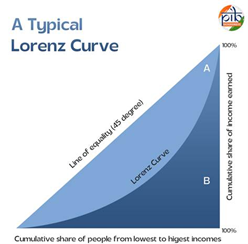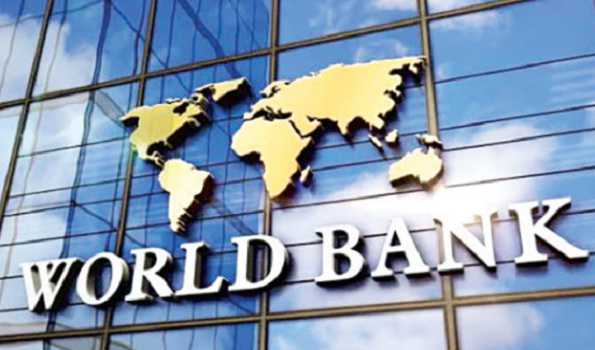Syllabus: GS3: Indian Economy and issues relating to Planning, Mobilization of Resources, Growth, Development and Employment.
Context:
According to the World Bank, India’s Gini Index stands at 25.5, making it the fourth most equal country in the world, after the Slovak Republic, Slovenia and Belarus among data revealed for167 countries.
More on the news:

- India falls into the “moderately low” inequality category, which includes Gini scores between 25 and 30, and is only a fraction away from joining the “low inequality” group, which includes countries like the Slovak Republic with a score of 24.1, Slovenia at 24.3, and Belarus at 24.4.
- Apart from these three, India has a better score than all of the other 167 countries for which the World Bank has released data.
- India’s score is much lower than China’s 35.7 and far lower than the United States, which stands at 41.8.
- Only 30 countries worldwide are classified under “moderately low” income inequality.
- This group includes welfare-oriented European nations like Iceland, Norway, Finland, and Belgium, as well as countries like Poland and the UAE.
- It reflects how India’s economic progress is being shared more evenly across its population.
- Behind this success is a consistent policy focus on reducing poverty, expanding financial access, and delivering welfare support directly to those who need it most.
Gini Index

- The Gini Index helps in understanding how equally income, wealth or consumption is distributed across households or individuals in a country.
- It ranges in value from 0 to 100.
- A score of 0 means perfect equality, while a score of 100 means one person has all the income, wealth or consumption and others have none, hence absolute inequality.
- The higher the Gini Index, the more unequal a country is.
- India’s journey towards a more equal society is reflected in its Gini Index over the years.
- The index was measured at 28.8 in 2011, and reached 25.5 in 2022.
- This steady shift shows that India has made consistent progress in combining economic growth with social equity.
Poverty Reduction:

- As per the Spring 2025 Poverty and Equity Brief by the World Bank, Inequality in India has come down significantly between 2011-12 and 2022-23, with 171 million Indians moving out of extreme poverty between 2011–23..
- The share of people living on less than 2.15 US dollars a day, which was the global threshold for extreme poverty till June 2025, fell sharply from 16.2 percent in 2011-12 to just 2.3 percent in 2022-23.
- Under World Bank’s revised extreme poverty threshold of $3.00 per day, the 2022-23 poverty rate would be adjusted to 5.3 percent.
Welfare Schemes Responsible for India’s Improvement
- PM Jan Dhan Yojana:
- Direct Benefit Transfer
- Stand-Up India
- Jan Dhan
- Direct Benefit Transfer
- Ayushman Bharat
- PM Vishwakarma Yojana
MAINS PYQ: Q. COVID-19 pandemic accelerated class inequalities and poverty in India. Comment. (2020)
Prelims PYQ Q.Inclusive growth as enunciated in the Eleventh Five Year Plan does not include one of the following: (2010)
(a) Reduction of poverty
(b) Extension of employment opportunities
(c) Strengthening of capital market
(d) Reduction of gender inequality

